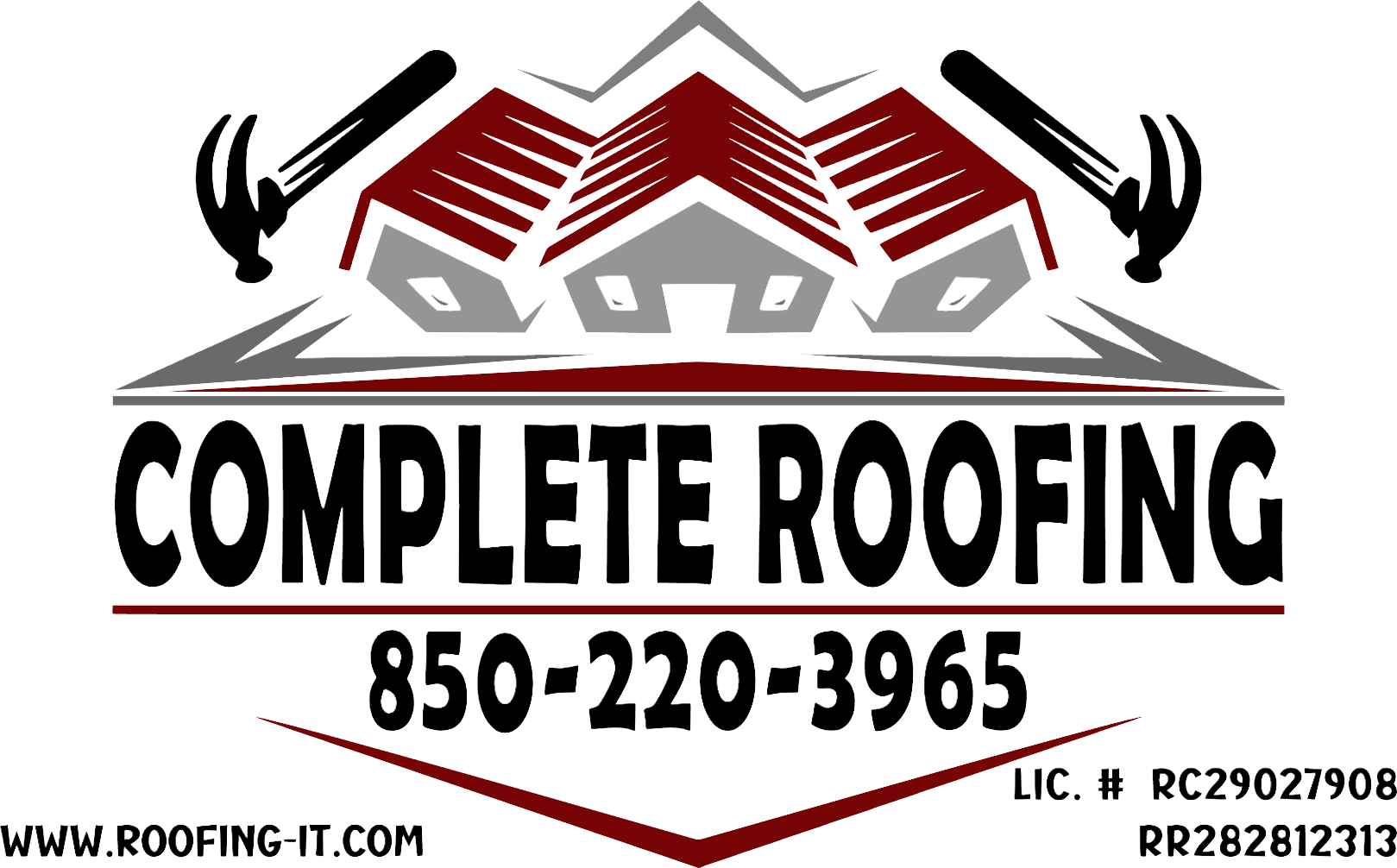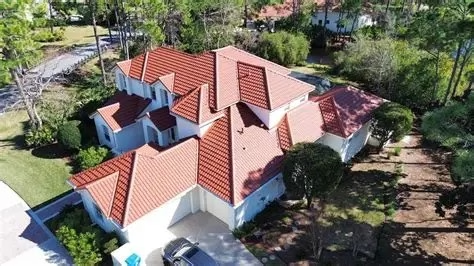Your roof is your home’s first line of defense against Florida’s intense sun, heavy rains, and hurricane-force winds. But like all parts of your home, it has a lifespan. Ignoring roof damage for too long can lead to costly repairs, water intrusion, and even structural issues. Knowing the signs that roof needs replacement can help Florida homeowners make smart, timely decisions before small issues turn into expensive emergencies.
In this guide, we’ll cover the roof aging signs, how to tell the difference between roof leaks vs. replacement, and when it’s time to consider a full roof replacement instead of temporary repairs.
Why Florida Roofs Have Shorter Lifespans
Roofs in Florida endure harsher conditions than those in most other states. Intense UV rays, year-round humidity, salt air near coastal regions, and frequent storms put extra stress on roofing materials. While a shingle roof might last 20–25 years in other parts of the U.S., in Florida the roof life expectancy can be 15–20 years, sometimes less if the roof hasn’t been properly maintained.
That’s why homeowners should be extra vigilant about spotting roof damage red flags early.
Top Signs It’s Time to Replace Your Roof
Here are the most important indicators Florida homeowners should look out for:
1. Age of the Roof
One of the clearest roof aging signs is simply its age. Asphalt shingle roofs typically last 15–20 years in Florida, while metal and tile can last longer with proper care. If your roof is nearing the end of its expected lifespan, you should begin planning for replacement even if it looks fine from the ground.
Tip: Check your home records or ask your roofing contractor when the roof was last replaced.
2. Frequent or Widespread Leaks
A single leak may only require a repair, but repeated or widespread leaks are often a sign of underlying structural issues. If you’re constantly patching leaks after every storm, it may be time to evaluate roof leaks vs. replacement.
- Localized leaks: Often repairable.
- Persistent leaks in multiple areas: Usually a sign of roof system failure.
3. Damaged or Missing Shingles
Strong Florida winds and storms can lift, crack, or completely remove shingles. While replacing a few shingles may be fine, widespread shingle loss is one of the strongest roof damage red flags. Once the protective barrier is compromised, water intrusion and mold growth are inevitable.
4. Sagging Roof Deck
If parts of your roof appear to dip or sag, it could indicate trapped moisture, rotting decking, or weakened structural support. This is not just cosmetic, it’s a serious safety hazard that usually requires full replacement.
5. Mold, Algae, and Rot
Florida’s humid climate encourages algae streaks, moss growth, and sometimes wood rot beneath shingles. While some staining may be harmless, significant growth can damage shingles and shorten your roof life expectancy. If mold spreads inside the attic, replacement becomes urgent.
6. Granule Loss on Shingles
Asphalt shingles have protective granules that shield against UV rays. Over time, these wear away, leaving shingles brittle and prone to cracking. If you find a large amount of granules in your gutters, it’s a clear indicator that your roof is deteriorating.
7. High Energy Bills
An aging roof can also impact energy efficiency. Poor insulation or ventilation causes your air conditioner to work harder, leading to higher cooling costs. Replacing your roof with modern materials can significantly improve your home’s energy performance.
Roof Leaks vs. Replacement: How to Decide
One of the biggest questions homeowners face is whether to repair or replace a roof. The decision depends on:
- Extent of damage – A small section with damage may be repaired. Widespread issues across multiple slopes point to replacement.
- Age of the roof – If your roof is already past 15–20 years, even minor repairs may not be cost-effective.
- Frequency of issues – Constant repairs signal systemic failure.
General rule: If repairs cost more than one-third of a full replacement, it’s usually smarter to replace the roof.
Roof Life Expectancy in Florida by Material
| Roofing Material | Average Lifespan (Florida) | Notes |
| Asphalt Shingles | 15–20 years | Most common, affordable, but shorter lifespan |
| Metal Roofing | 30–50 years | Resistant to hurricanes, energy-efficient |
| Concrete/Clay Tile | 25–50 years | Heavy but durable in Florida’s climate |
| Flat Roofing Systems | 10–20 years | Requires regular maintenance to prevent leaks |
Keep in mind that regular maintenance, proper installation, and routine inspections can extend these averages.
Proactive Steps for Florida Homeowners
Replacing a roof is a major investment, but waiting too long only increases the risk of interior water damage, mold remediation, and costly structural repairs. Here are some proactive steps:
- Schedule Annual Roof Inspections – Florida’s climate demands yearly inspections, especially after hurricane season.
- Clean Gutters and Downspouts – Clogged gutters trap water, leading to premature roof deterioration.
- Trim Nearby Trees – Overhanging branches can scrape shingles and increase debris buildup.
- Monitor Attic Conditions – Check for water stains, mold, or poor ventilation.
When to Replace Roof in Florida: Timing Matters
Choosing the right time to replace your roof is also important:
- Before hurricane season – Completing replacement in spring ensures your home is prepared for storms.
- After repeated storm damage – If your roof has survived multiple repairs post-storm, full replacement is usually the safer choice.
- When selling a home – A new roof significantly boosts resale value and buyer confidence.
FAQs on Roof Replacement in Florida
Q1: How often should Florida homeowners replace their roof?
Most asphalt shingle roofs need replacement every 15–20 years, while metal and tile can last much longer with proper care.
Q2: Can insurance cover roof replacement?
Yes, if the damage is storm-related and not due to normal wear and tear. Always check your policy details.
Q3: What’s the difference between roof repair and roof replacement?
Repairs address small, localized issues, while replacement is needed when the roof system has reached the end of its life expectancy or suffered widespread damage.
Q4: What’s the best roof material for Florida homes?
Metal and tile roofs are highly durable and resistant to Florida’s extreme weather, but asphalt shingles remain the most affordable option.
Final Thoughts
Your roof protects your biggest investment in your home. Ignoring the signs roof needs replacement can lead to expensive repairs, health risks from mold, and even structural damage. Florida homeowners should stay vigilant for roof aging signs, weigh the cost of roof leaks vs. replacement, and act before the next hurricane season.
If your roof is showing roof damage red flags, consulting a licensed roofing contractor will help you determine whether repair or replacement is the best option. A proactive approach ensures peace of mind, better energy efficiency, and long-term protection for your home.






0 Comments